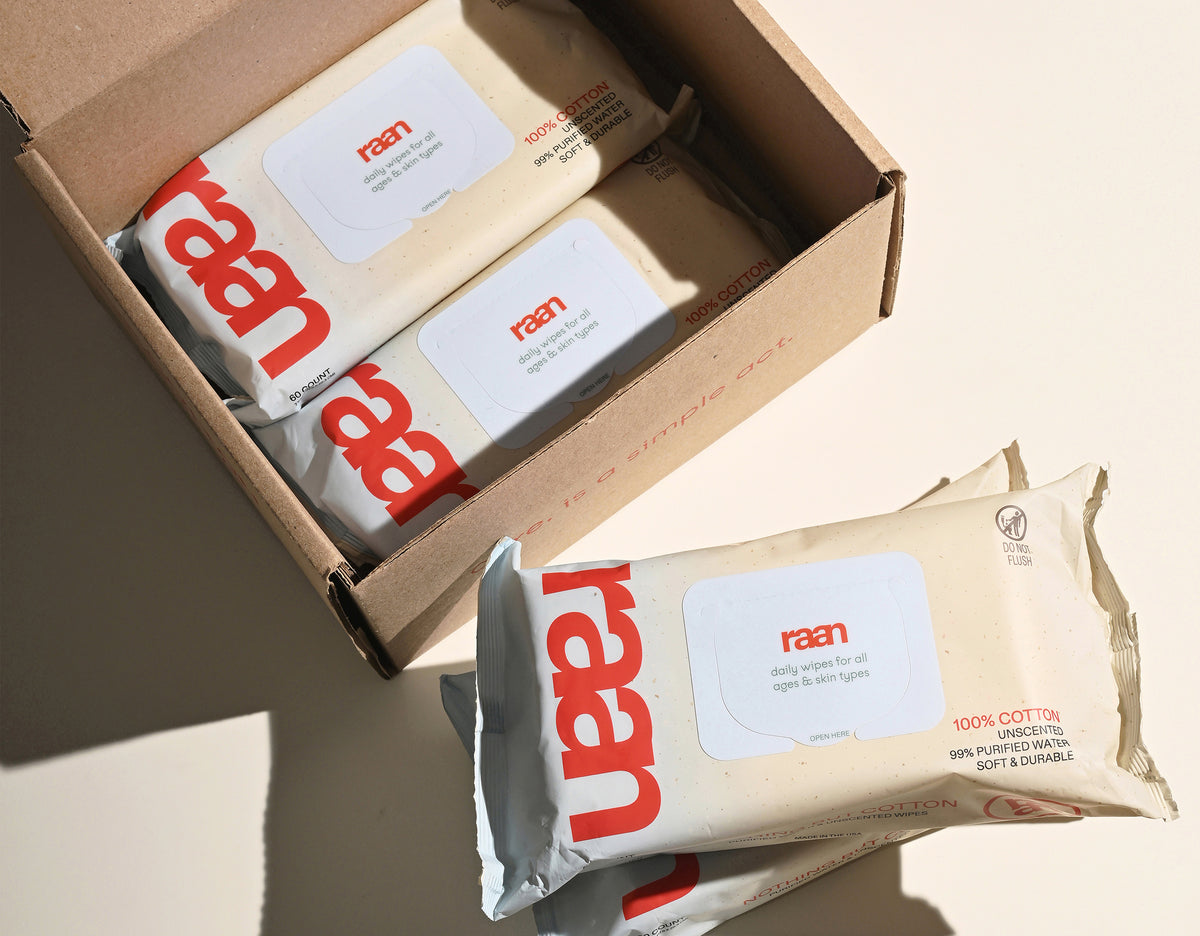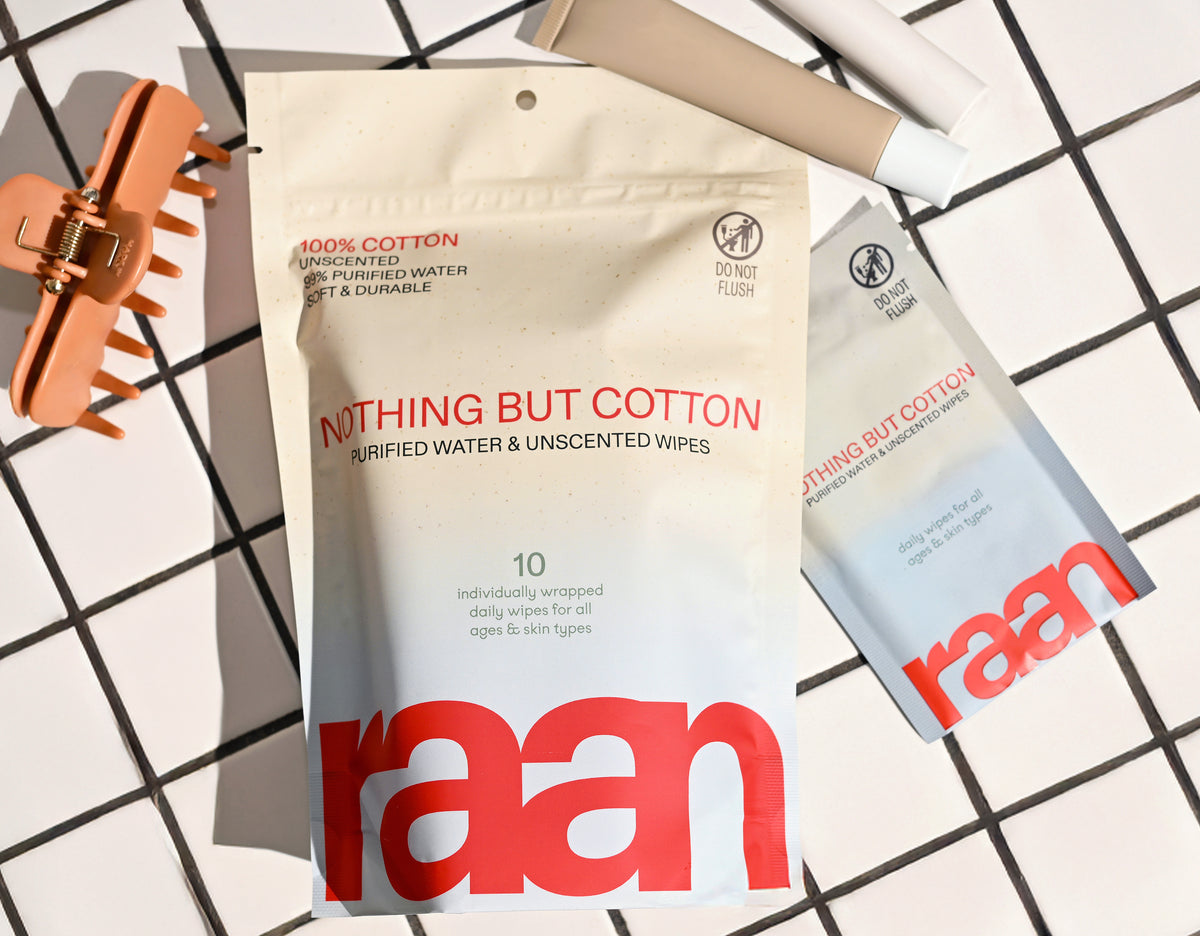What Is Skin-to-Skin Contact?
Skin-to-skin contact — also known as kangaroo care — is exactly what it sounds like: placing your diapered newborn directly on your bare chest, with nothing between you and your baby except maybe a blanket draped over both of you. It's one of the most natural, powerful tools available to new parents, yet many don't realize just how transformative this simple practice can be.
Key Takeaways
- Skin-to-skin contact involves placing a diapered newborn directly on a parent's bare chest immediately after birth and regularly thereafter.
- This practice helps regulate the baby's temperature, heart rate, and breathing.
- Skin-to-skin contact promotes bonding between parent and child and supports breastfeeding success.
- It reduces stress for both the parent and the baby.
- Health experts recommend starting skin-to-skin contact within the first hour after birth and continuing for at least one-hour sessions whenever possible.
Table of Contents
- What Is Skin-to-Skin Contact?
- The Science Behind Skin-to-Skin
- Immediate Benefits for Your Baby
- Long-Term Benefits for Parents and Babies
- How Fathers Benefit from Skin-to-Skin
- Practical Guide: How to Do Skin-to-Skin
- Addressing Common Concerns and Challenges
- Making Skin-to-Skin Sustainable Long-Term
- Special Circumstances and Adaptations
- Supporting Your Skin-to-Skin Practice
- Embracing the Journey
This isn't just about bonding (though that's certainly part of it). Skin-to-skin contact is a medically recognized intervention that supports your baby's transition from womb to world. When your newborn is placed chest-to-chest with you, their body begins to regulate in ways that even the most advanced medical equipment can't replicate.
Both mothers and fathers can practice skin-to-skin contact, and the benefits extend well beyond those first precious moments in the delivery room. You can continue this practice at home, making it part of your daily routine with feeding, napping, or simply quiet bonding time.
The Science Behind Skin-to-Skin

Here's what happens when you hold your baby skin-to-skin: your body becomes a living, breathing regulatory system for your newborn. Your chest provides the perfect temperature, your heartbeat offers a familiar rhythm, and your breathing patterns help guide theirs.
Research consistently shows that babies who experience regular skin-to-skin contact with newborn have more stable vital signs, better blood sugar levels, and improved oxygen saturation. Your baby's stress hormones decrease while feel-good hormones like oxytocin increase — for both of you.
The Original Kangaroo Care: This practice originated in 1970s Colombia when hospitals lacked enough incubators for premature babies. Doctors discovered that placing preterm infants on their mothers' chests worked better than expected — babies thrived, and the practice spread worldwide as research confirmed its remarkable benefits.
What makes skin-to-skin so effective is its simplicity. Your newborn spent nine months in a warm, secure environment where they heard your heartbeat and felt your movements. Skin-to-skin contact recreates that security while helping them adapt to life outside the womb.
Immediate Benefits for Your Baby
The moment you place your baby on your chest, their body begins to respond. Skin-to-skin contact for newborns provides immediate physiological benefits that you can often observe in real-time.
Temperature regulation happens almost instantly. Your chest adjusts to provide the exact warmth your baby needs — it actually increases in temperature if your baby is cold and decreases if they're too warm. This natural thermostat is more responsive than any blanket or heating pad.
Your baby's heart rate and breathing also stabilize during skin-to-skin contact. The irregular patterns common in newborns often smooth out as they sync with your more mature rhythms. This is particularly important for premature babies, whose systems are still developing these regulatory abilities.
Blood sugar stability is another crucial benefit. Newborns can experience drops in blood glucose as they adjust to life outside the womb, but skin-to-skin contact helps maintain more stable levels, reducing the need for medical intervention.
Perhaps most remarkably, babies placed skin-to-skin often display instinctive behaviors that support breastfeeding. They may begin rooting, moving toward the breast, or showing other early feeding cues — all without any prompting or assistance.
Long-Term Benefits for Parents and Babies

While the immediate effects of skin-to-skin contact are impressive, the long-term benefits extend far beyond those first few weeks. Research shows that regular skin-to-skin contact creates lasting changes in both parent and baby development that can influence your relationship for years to come.
For babies, the benefits of consistent skin-to-skin contact include improved cognitive development, better emotional regulation, and enhanced immune function. Studies tracking children who received extensive skin-to-skin contact as newborns show they tend to have better stress responses and more secure attachment patterns as they grow.
Parents who practice regular skin-to-skin with newborn often report feeling more confident in their caregiving abilities. The increased oxytocin production doesn't just happen once — it continues with each session, strengthening the parent-child bond and reducing anxiety around new parent responsibilities.
Breastfeeding success rates are significantly higher among families who practice skin-to-skin contact regularly. The combination of hormone stimulation, baby's natural feeding instincts, and increased parent confidence creates an environment where breastfeeding is more likely to establish successfully and continue long-term.
Research Insight: A 20-year follow-up study found that premature babies who received extensive kangaroo care showed better cognitive performance, reduced hyperactivity, and lower aggression compared to those who received standard incubator care alone.
How Fathers Benefit from Skin-to-Skin
Many new fathers wonder about their role in skin-to-skin contact with newborn care, especially if their partner is breastfeeding. The truth is, fathers who practice skin-to-skin contact experience many of the same hormonal and emotional benefits as mothers, creating their own unique bond with their baby.
When fathers hold their babies skin-to-skin, they also experience increased oxytocin and decreased cortisol levels. This hormonal shift helps reduce paternal anxiety and promotes feelings of attachment and protectiveness. Many fathers report feeling more connected to their baby and more confident in their parenting abilities after regular skin-to-skin sessions.
For babies, skin-to-skin contact with father provides the same regulatory benefits — stable heart rate, improved temperature control, and reduced stress hormones. Babies quickly learn to recognize their father's unique scent, voice, and heartbeat rhythm, creating a distinct bonding experience that's separate from but equally important as the maternal bond.
Fathers often find that skin-to-skin contact gives them a special way to comfort and soothe their baby, especially during fussy periods or when the baby needs calming but isn't hungry. This creates opportunities for meaningful caregiving that don't depend on breastfeeding.
Practical Guide: How to Do Skin-to-Skin

Understanding how to do skin-to-skin with newborn is straightforward, but getting the details right ensures both safety and maximum benefit. The basic principle remains the same whether you're in the hospital or at home, but there are some important considerations for each setting.
Position yourself in a comfortable, semi-reclined position — think of a reclining chair angle rather than lying flat. Remove your shirt and your baby's clothing except for their diaper. Place your baby chest-to-chest with you, with their head turned to one side so their ear is over your heart.
Cover both of you with a blanket, ensuring your baby's back and head stay warm. Your baby's arms should be free to move, and their legs can be tucked up in a comfortable position. The key is skin-to-skin contact across the chest and abdomen area.
Safety is paramount during skin-to-skin contact. Always ensure your baby's airway remains clear — you should be able to see their face, and their neck shouldn't be bent in a way that restricts breathing. Stay awake and alert during skin-to-skin sessions, especially in the early weeks.
| Setting | Duration | Special Considerations |
|---|---|---|
| Hospital (immediately after birth) | At least 1 hour, ideally uninterrupted | Delay routine procedures when possible |
| Hospital (ongoing) | Several times daily, 30-60 minutes each | Coordinate with feeding schedules |
| Home (newborn period) | Daily sessions, as long as comfortable | Create calm environment, limit distractions |
| NICU (premature babies) | Extended sessions, 2-3 hours when possible | Medical supervision, equipment considerations |
Addressing Common Concerns and Challenges
Many new parents have questions about how long to do skin-to-skin and whether they're doing it correctly. The good news is that there's no such thing as too much skin-to-skin contact, as long as both you and your baby are comfortable and safe.
Some parents worry about hygiene during skin-to-skin contact. While you should be clean, you don't need to be sterile. Avoid heavily scented lotions or perfumes, as these can interfere with your baby's natural instincts and may cause irritation to their sensitive skin.
If you're concerned about cleanliness during skin-to-skin sessions, gentle wipes designed for sensitive skin can help you feel more confident. Look for wipes made from natural materials like unbleached cotton with minimal ingredients — these are gentle enough for both you and your baby while providing the cleansing you need.
Weather and temperature concerns are common, especially in cooler months. Remember that your body will naturally adjust its temperature to keep your baby comfortable, but you can also adjust room temperature and blanket coverage as needed. If your baby seems too warm or too cool, trust your instincts and make adjustments.
For families dealing with NICU stays, skin-to-skin contact becomes even more important but may require coordination with medical staff. Don't hesitate to ask your healthcare team about opportunities for kangaroo care — most NICUs actively encourage and support this practice because of its proven benefits for premature and medically fragile babies.
Making Skin-to-Skin Sustainable Long-Term
The key to maximizing skin-to-skin contact benefits lies in creating sustainable routines that work for your family's unique situation. While the immediate postpartum period offers the most intensive opportunities for skin-to-skin contact, the practice can continue to benefit both you and your baby for months.
Many parents find that incorporating skin-to-skin contact into daily routines — like after bath time, during evening wind-down, or first thing in the morning — helps maintain consistency without feeling overwhelming. The goal isn't perfection; it's creating meaningful moments of connection that support your baby's development and your own confidence as a parent.
For working parents, even short sessions of skin-to-skin with newborn can be powerful. A 15-20 minute session when you arrive home from work can help both you and your baby reconnect and regulate after separation. Weekend mornings often provide longer opportunities for extended contact.
As your baby grows, the nature of skin-to-skin contact naturally evolves. While newborns may settle in for hour-long sessions, older babies might be more active and prefer shorter, more frequent contact. Trust your baby's cues and adjust your approach accordingly.
Practical Tip: Keep a soft, clean shirt or robe designated for skin-to-skin sessions. This makes it easier to transition quickly into contact time and helps maintain hygiene without overthinking the process.
Special Circumstances and Adaptations
Not every family's skin-to-skin contact journey looks the same, and that's perfectly normal. Cesarean births, NICU stays, adoption, and other special circumstances may require adaptations to traditional skin-to-skin practices, but the core benefits remain accessible.
For families dealing with cesarean recovery, skin-to-skin contact can often begin in the operating room or recovery area, depending on your hospital's protocols. The side-lying position may be more comfortable initially, and partners can step in to provide skin-to-skin contact while the birthing parent recovers.
Adoptive parents and families using surrogacy can absolutely benefit from skin-to-skin contact. The bonding and regulatory benefits aren't dependent on pregnancy or birth experience — they're about the intimate contact between parent and baby. Starting skin-to-skin contact as early as possible after placement helps establish these important connections.
For babies with medical needs or equipment, kangaroo care often becomes even more crucial. NICU staff are typically well-versed in adapting skin-to-skin contact around medical equipment and can guide you through safe positioning and timing.
Premature babies especially benefit from extended skin-to-skin contact, sometimes called "kangaroo mother care" when practiced for several hours daily. Research shows that premature babies who receive extensive skin-to-skin contact often have shorter hospital stays and better developmental outcomes.
Supporting Your Skin-to-Skin Practice
Creating an environment that supports regular skin-to-skin contact with newborn involves more than just the physical act. Consider practical elements that make the experience more comfortable and sustainable for your family.
Temperature control in your home becomes more important when you're regularly removing clothing for skin-to-skin contact. A slightly warmer room temperature can help both you and your baby stay comfortable during sessions.
Having supplies within easy reach makes skin-to-skin time more relaxing. Keep water, healthy snacks, your phone, and any other essentials nearby so you don't need to interrupt contact to meet your own needs.
For hygiene during and after skin-to-skin sessions, gentle cleansing options designed for sensitive skin can help you feel fresh and confident. Look for wipes made from natural materials like unbleached cotton with minimal, food-grade ingredients that won't irritate your skin or leave residue that could affect your baby.
Consider your clothing choices for easy skin-to-skin access. Button-front shirts, nursing tops, or loose-fitting clothing that can be easily removed or adjusted makes transitioning into skin-to-skin contact smoother and less disruptive.
Embracing the Journey
Understanding why skin-to-skin is important helps you prioritize this practice even when life feels overwhelming. The science is clear: skin-to-skin contact provides measurable benefits for both babies and parents that extend far beyond the newborn period.
Every family's skin-to-skin journey will look different, and that's exactly as it should be. Whether you're able to practice extensive kangaroo care or squeeze in shorter sessions between other responsibilities, you're providing your baby with important developmental support and building your own confidence as a parent.
The beauty of skin-to-skin contact lies in its simplicity — it requires no special equipment, no complex techniques, and no perfect conditions. Just you, your baby, and the powerful connection that comes from this most basic form of human comfort and care.
As you navigate the early weeks and months with your baby, remember that skin-to-skin contact is both a tool and a gift. It's a practical way to support your baby's development and your own well-being, but it's also an opportunity to slow down and simply be present with your child in a world that often moves too fast.
Trust your instincts, follow your baby's cues, and embrace the profound simplicity of skin-to-skin contact. The benefits you're providing — for your baby's development, your own confidence, and your lifelong relationship — are immeasurable and lasting.
Frequently Asked Questions
Why do hospitals charge for skin-to-skin?
Hospitals may charge for skin-to-skin contact as part of broader delivery or postpartum care fees, reflecting the time, staff support, and resources involved in facilitating immediate newborn care. It’s not a separate service but rather integrated into the overall birthing experience, and any fees typically cover medical monitoring and support rather than the skin-to-skin practice itself.
When is skin-to-skin no longer beneficial?
Skin-to-skin remains beneficial beyond the immediate newborn period, supporting bonding, temperature regulation, and breastfeeding. However, its critical window is within the first hour after birth, when it promotes essential physiological stability. While ongoing skin-to-skin contact supports comfort and emotional connection, its specific newborn health benefits gradually lessen as the baby grows and develops independent regulation.
What does it mean to do skin-to-skin?
Doing skin-to-skin means placing a naked newborn directly onto a caregiver’s bare chest, usually the mother or father, allowing direct contact between their skin surfaces. This simple practice supports the baby’s body temperature, breathing, heart rate, and emotional security, creating an environment that mimics the womb and encourages natural bonding and breastfeeding initiation.
Is it okay for a newborn to sleep during skin-to-skin?
Yes, it’s perfectly normal and safe for a newborn to sleep during skin-to-skin contact when done under supervision. Skin-to-skin helps regulate the baby’s breathing and temperature, promoting restful sleep and comfort. However, caregivers should remain awake and attentive to ensure safe positioning and prevent any accidental airway obstruction.
When is it too late to start skin-to-skin?
It’s never truly too late to start skin-to-skin contact. While the immediate postpartum period is ideal for maximizing benefits, skin-to-skin can be introduced at any time to support bonding, calming, and breastfeeding—even days or weeks after birth. The practice remains a gentle, effective way to nurture connection regardless of timing.
How much is the first skin-to-skin contact fee?
There isn’t typically a separate fee labeled specifically for first skin-to-skin contact. Any costs related to newborn care, including facilitating skin-to-skin, are usually bundled into the overall hospital delivery or postpartum charges. If you have questions about billing, it’s best to check with your hospital’s billing department for precise details on what services are included.






